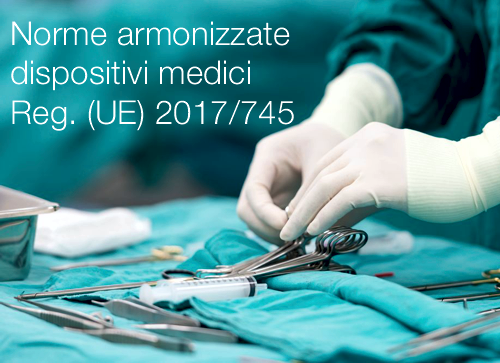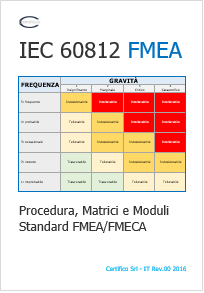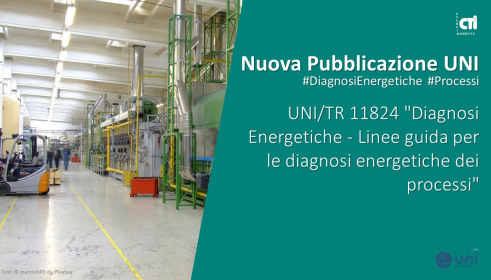Decisione di esecuzione (UE) 2024/815

Decisione di esecuzione (UE) 2024/815 / Norme armonizzate sterilizzazione e valutazione biologica DM 03.2024
ID 21468 | 08.03.2024
Decisione di esecuzione (UE) 2024/815 della Commissione, del 6 marzo 2...
ID 22749 | 17.10.2024 / Ed. 2 2024 - In allegato Preview
UNI EN ISO 10882-2:2024
Salute e sicurezza in saldatura e nei processi correlati - Campionamento delle particelle in sospensione e dei gas nella zona respiratoria del saldatore - Parte 2: Campionamento dei gas
Data disponibilità: 10 ottobre 2024
Recepisce: EN ISO 10882-2:2024
Adotta: ISO 10882-2:2024
La norma fornisce una guida per la determinazione dell'esposizione personale a gas e vapori nella saldatura e nei processi correlati. Essa si applica ad alcuni processi termici usati per le operazioni di giunzione, taglio, rivestimento superficiale od asportazione di metalli.
Gases encountered during welding and allied processes are so numerous that it would be impracticable to cover them all in this document. Depending on the process, they can include:
a) fuel gases which are used in gas welding and cutting, which on combustion produce carbon dioxide and, in some instances, carbon monoxide;
b) shielding gases, such as argon, helium, carbon dioxide or mixtures of these gases, which can be toxic or asphyxiant;
c) gases produced by the action of heat upon the welding flux or slag, e.g. carbon dioxide and carbon monoxide;
d) gases produced by the action of heat or ultraviolet radiation upon the atmosphere surrounding the welding arc, e.g. nitric oxide, nitrogen dioxide and ozone;
e) vapours produced as a result of thermal degradation of surface coatings in the welding or cutting of metals treated with paint, primer, sealer or other substances. Vapours can also be produced as a result of degradation of solvent vapour from degreasing operations, but their measurement is not dealt with in this document because good working practices will avoid their production.
The scope of this document has been limited to those gases which are produced by welding operations. In particular, fuel, oxidant and shielding gases used in welding and allied processes are not covered, since the hazards associated with their use (e.g. asphyxiation, explosion) are different from those arising from the gases dealt with in this document.
This document gives a generalised description of measurement methods suitable for the assessment of personal exposure to gases produced by welding and allied processes; gives details of relevant European Standards which specify required characteristics, performance requirements and test methods; augments guidance provided in EN 689 on assessment strategy and measurement strategy; lists basic sampling requirements; and provides specific information about the availability of direct reading electrical apparatus, detector tubes and indirect methods involving laboratory analysis for individual gases.
It has been assumed in the drafting of this document that the execution of its provisions, and the interpretation of the results obtained, is entrusted to appropriately qualified and experienced people.
1 Scope
This document provides guidance and specifications for the determination of personal exposure to gases and vapours in welding and allied processes. It applies to the following thermal processes used to join, cut, surface or remove metals:
(111) Manual metal arc welding (metal arc welding with covered electrode); shielded metal arc welding /USA/
(114) Self-shielded tubular-cored arc welding
(131) Metal inert gas welding; MIG welding; gas metal arc welding /USA/
(135) Metal active gas welding; MAG welding; gas metal arc welding /USA/
(136) Tubular-cored metal arc welding with active gas shield; flux cored arc welding /USA/
(137) Tubular-cored metal arc welding with inert gas shield; flux cored arc welding /USA/
(141) Tungsten inert gas arc welding; TIG welding; gas tungsten arc welding /USA/
(15) Plasma arc welding;
(31) Oxy-fuel gas welding; oxy-fuel gas welding /USA/
(52) Laser beam welding;
(912) Flame brazing; torch brazing /USA/
(97) Braze welding;
- arc and flame gouging;
- arc and laser cutting processes;
- flame and plasma cutting processes;
- metal-spraying (see ISO 4063).
The following gases and vapours which can be produced or be present during welding and allied processes are covered:
- ozone (O3);
- carbon monoxide (CO);
- carbon dioxide (CO2);
- nitric oxide (NO) and nitrogen dioxide (NO2);
- vapours produced in the welding or cutting of metals having paint or other surface coatings.
Fuel, oxidant and shielding gases used in welding and allied processes are not covered.
The general background level of gases and vapours in the workplace atmosphere influences personal exposure, and therefore the role of fixed-point measurements is also considered.
Collegati

ID 21468 | 08.03.2024
Decisione di esecuzione (UE) 2024/815 della Commissione, del 6 marzo 2...

A seguito dell'elaborazione del Documento Estratto sulla Tecnica FMEA (IEC 60812), il Documento allegato illustra, in brevi sintesi, come è str...

Testata editoriale iscritta al n. 22/2024 del registro periodici della cancelleria del Tribunale di Perugia in data 19.11.2024